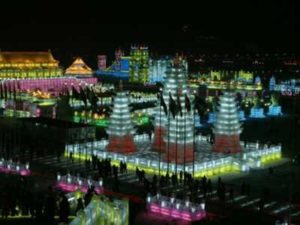The Dhaka Times Desk Like every week, we are bringing you interesting news from around the world. Hope you like it.

City of Flower Clocks
Among the cities in Switzerland, Geneva has the highest number of tourists. All the streets of Geneva are decorated with thousands of electric lights. A flood of joy flows day and night. A garden decorated with various flowers. The 12 feet clock is decorated with beautiful flowers. It also takes time. Geneva is world famous for its city clocks. All the famous watch companies are here. Tourists spend lakhs of rupees thinking that they will get a good watch at a low price. Swish people can do very fine watch work well. Children in Switzerland have to learn English and three other languages. Germany, the city of Zurich to the north, Italy to the south and France to the west. So actually it is very important to know their three languages. There are many things to see in Geneva, one of which is the League of Nations building. Here are the offices of the Red Cross and the International Labor Organization. French culture is abundant in this city. Daily living is French style. The sidewalks are dotted with restaurants under the sky. Indeed, Switzerland is a paradise for tourists. The city looks beautiful with tall mountains, water bodies and trees. All around is clean, be it in the city or in the countryside.
Tourists come in droves for vacations in this beautiful country. Hotel business is good. It will not be an exaggeration to say that it is their race. All the children of this country are apprenticed to hotels no matter how big they are. Swish engineer, doctor and hotel keeper world famous. Farmers of this country do not take rice seeds and look to the sky hoping for rain. The snow keeps the soil moist for six months, and rain continues in the hilly areas. Swiss people are hardworking and progressive. Across Lake Geneva in Switzerland is France. Even though they are two different countries, there is no barrier to travel. Passport, Visa etc
there is nothing
Healthy place: Canary Islands
The Canary Islands consist of seven islands in the Atlantic Ocean. One of these is the island of Tenerife. Tenerife has two airports. One in the north, one in the south. There are two or four houses on this uninhabited island by the sea. Far below the square built in front of these houses, the maddened waves of the sea came crashing against the mountain walls. While the southern part of the Spanish island of Tenerife is sunny most of the day, the northern part is not so, there are more clouds, more rain, more humidity than the sun. Not only that, there are many trees and plants in the northern region. Still European doctors, especially British and Dutch doctors, advise their patients to get a change of air in northern Tenerife. The northern part of this ancient island is still a natural health resort for old age or circulatory diseases. From the south side of Tenerife to the north, you can see less sun, more clouds or this cloud, this sun, this winter, this mild heat. There are green hills. There is no end to the rows of blood, white, and yellow karabees on the roadside. Along the way, the deep black ocean can be seen in front. Rows of dwarf banana trees lined the black sands. Banana is called Platano here. Calais is the main fruit of Terreneif Island. The remaining 6 islands of the Canary Islands are La Gomera, La Palma, El Hierro, Gran Canaria, Fuerte Ventura and Lan Sararote. Of these, Tenerife is the largest. The highest mountain in Spain is Tiede or Teide. It is almost in the middle of Tenerife. There are long hills. Rough mountain trails sometimes through primeval forest, sometimes open desert. Tied can be reached by crossing a long mountain pass. Canarian people are very hospitable. Open minded people. Proud of their culture. You can go from one island to another island here by ship. Every island is very beautiful. Even at 10:00-11:00 p.m., one can roam the streets alone. Tourists who visit sit on the shores of the Atlantic. The sea, the mountains, the sky and their incredible color changes and this pristine solitude can be found on every island in the Canary Islands. For which these islands are called
'Healthy space'.
Who gave oxygen to the earth
Blue green algae are the most primitive autophagous organisms, originated on earth more than 3 billion years ago. Before their origin there was no oxygen in the Earth's atmosphere. When blue-green algae start photosynthesising, oxygen begins to circulate in the atmosphere.
All blue-green algae are prokaryotic meaning that their cells do not have a proper nucleus, nucleolus and any nuclear envelope. They have no plastids and flagella, no sexual reproduction system. However, in some species, a type of genetic recombination called fusion of nuclear material occurs. Different types of blue-green algae. Unicellular, free-living, planktonic or attached. Some are regular or irregular colonies, many are multicellular filamentous, branched or unbranched, some have artificial branches. These filamentous algae sometimes form sticky colonies. They reproduce by cell division, fragmentation, hormone formation, multicellular homospores or microspores, nanospores, endospores, akinetes or heterocysts. Blue-green algae exist in a wide variety of environments, temperatures, light and other conditions all over the world, but they are most abundant in freshwater alkaline environments. Bangladesh has many genera and species of blue-green algae from semi-aerial, terrestrial and aquatic (lakes, ponds, ponds, paddy fields, rivers, estuaries and seas) habitats. Most of the ponds, ponds and other closed bodies of water in Bangladesh are biologically polluted, causing blue-green algae to bloom and the water to remain blue-green almost throughout the year. Generally, the rapid growth of Microcystis flos-aquae and M. aeruginosa makes the water unfit for fishing, recreation and domestic use. The cells of these algae eventually die and rot, emitting a toxic odor. Effluent water bodies caused by their overgrowth are hazardous to human health. Semi-aerobic species of algae are easily seen everywhere in Bangladesh. Scattered black or pinkish-red patches on tree trunks, buildings, mosques and other structures in Bangladesh are due to the presence of these species. Many types of terrestrial blue-green algae grow in wet soils in Bangladesh, especially during the monsoons. Many species of aquatic blue-green algae grow abundantly in all types of aquatic (freshwater, brackish and marine) habitats. Many of the species are planktonic and some spawn in biologically polluted waters. Greater numbers in southern low-salinity habitats than freshwater. Species of the genus Jahanesbaptistia were found only in low salinity ponds of shrimp farming in Khulna and Satkhira. The blue-green algae in Bangladesh share many of the characteristics of true bacteria and that is why many today call them cyanobacteria as a group of bacteria. A characteristic of bacteria, especially in tropical countries, is the ability to fix nitrogen from the air into soil and water. Currently, blue-green algae are used as biofertilizers to increase soil fertility in tropical countries in Asia, Africa and Latin America. Spirulina species are now considered 'wonder organisms'. Their cells contain about 70% of protein, more than any other living organism. It also contains various vitamins, mineral salts and other ingredients. Anabaena azollae, a native of Bangladesh's readily available aquatic fern Azolla pinnata, can capture nitrogen from the air, which is why efforts are now being made to use Azolla to increase field fertility.


